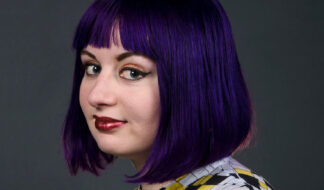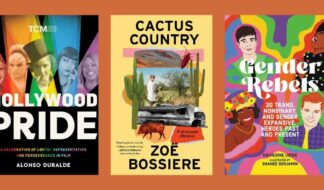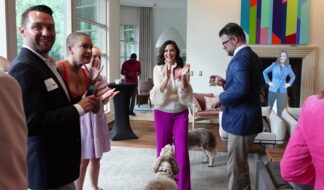How Birdwatching Helped Me Find My Queer Community — and Myself
For LGBTQ+ people like writer Ashley D'Souza, the outdoors is common ground for connection
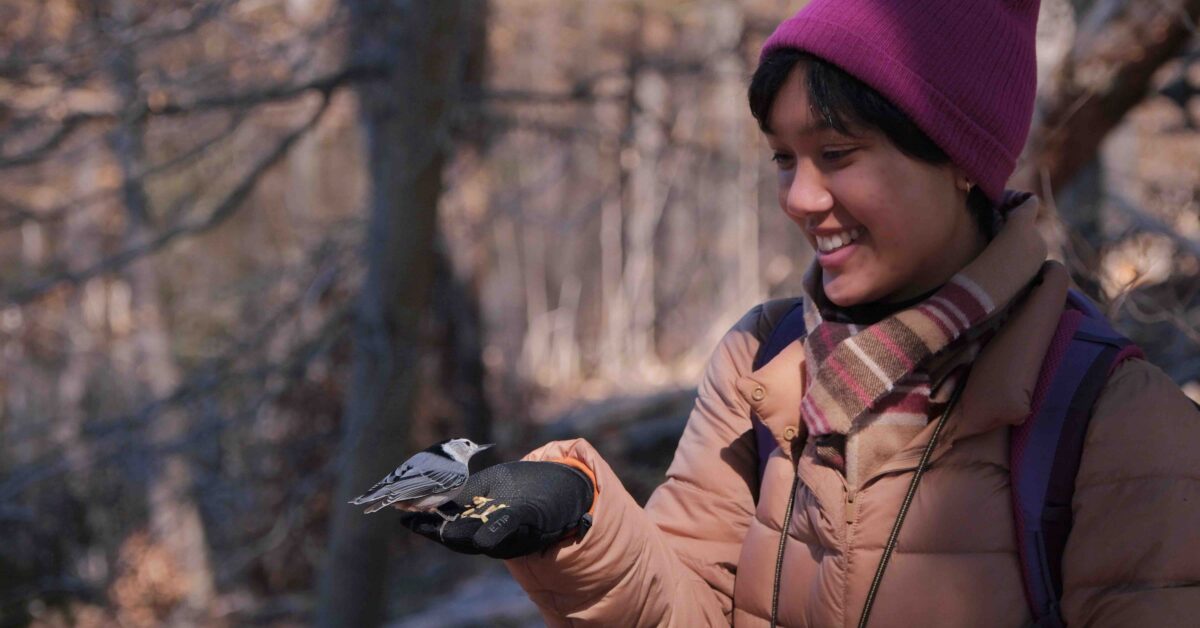
The first bird I ever identified by ear was a northern mockingbird. At the time, I couldn’t anticipate how one bird would shape my life, help me understand my identity and grow my community.
The northern mockingbird, a nondescript looking gray and white bird, is a master of disguise: It can learn and imitate 200 different sounds, ranging from other species’ songs to car alarms, lawn mowers, sirens and dog barks. The bird seems proud of its vocal prowess, too; it perches atop lampposts, roofs and trees, belting loudly through the day and into the night, persistently repeating the same phrase before moving onto the next persona.
Not long after I encountered the mockingbird, I began to question my gender, launching a new era in my life immortalized by my “don’t mind me, I’m just having a gender crisis” playlist on Spotify. (It has only four songs that I listened to on repeat.) I had come out as bisexual a year prior, just stopped being someone’s girlfriend, and realized that wearing floral dresses made me want to take my skin off. I turned to nature for answers.
Like the mockingbird, I felt most authentic when I wasn’t boxed into a single mode of expression. My identity felt fluid, and I wanted to sing it out more loudly just for that. I found solace in observing birds in the wild because wildlife doesn’t prescribe to the same social norms and hierarchies that we do, nor does it judge us. It is only in wild spaces that I can truly let my guard down and can switch from feeling like a potential target to a peaceful observer, an experience I trust is shared by other queer people of color, trauma survivors and members of marginalized groups.
Nature also helps me connect to other people. One of my closest friends and I bonded over birds when we first met; our opening messages on Bumble BFF consisted of memes about “weird duck season” and exchanges of our favorite local birdwatching spots. Alex was my first nonbinary friend, and they taught me that I could be nonbinary and femme at the same time without feeling like a contradiction. During our friendship, they transitioned to fully using they/them pronouns, giving me the courage to do the same. They share my fascination with identifying wildlife and together we go on birdwatching trips, inaugurate new bird-curious acquaintances into our circle, and continue learning about birds and ourselves.
The northern mockingbird set me off on my birdwatching journey, and four years later, I can’t imagine my life without birds. I write about them, photograph them and look for them everywhere I go. And I talk about them to anyone who will listen. However, I don’t look like most of the other birdwatchers I encounter, and in birdwatching groups, I’ve often felt invisible. A 2022 survey by the U.S. Fish and Wildlife Service studied the demographics of people who participate in “wildlife-watching” — primarily birdwatching — and found that more than 70% of participants were white, and only 5% were Asian, like me. Less than 2% were gender-nonconforming. While these statistics are relatively proportional to national demographics, they don’t make for the most inclusive environment for people like me.
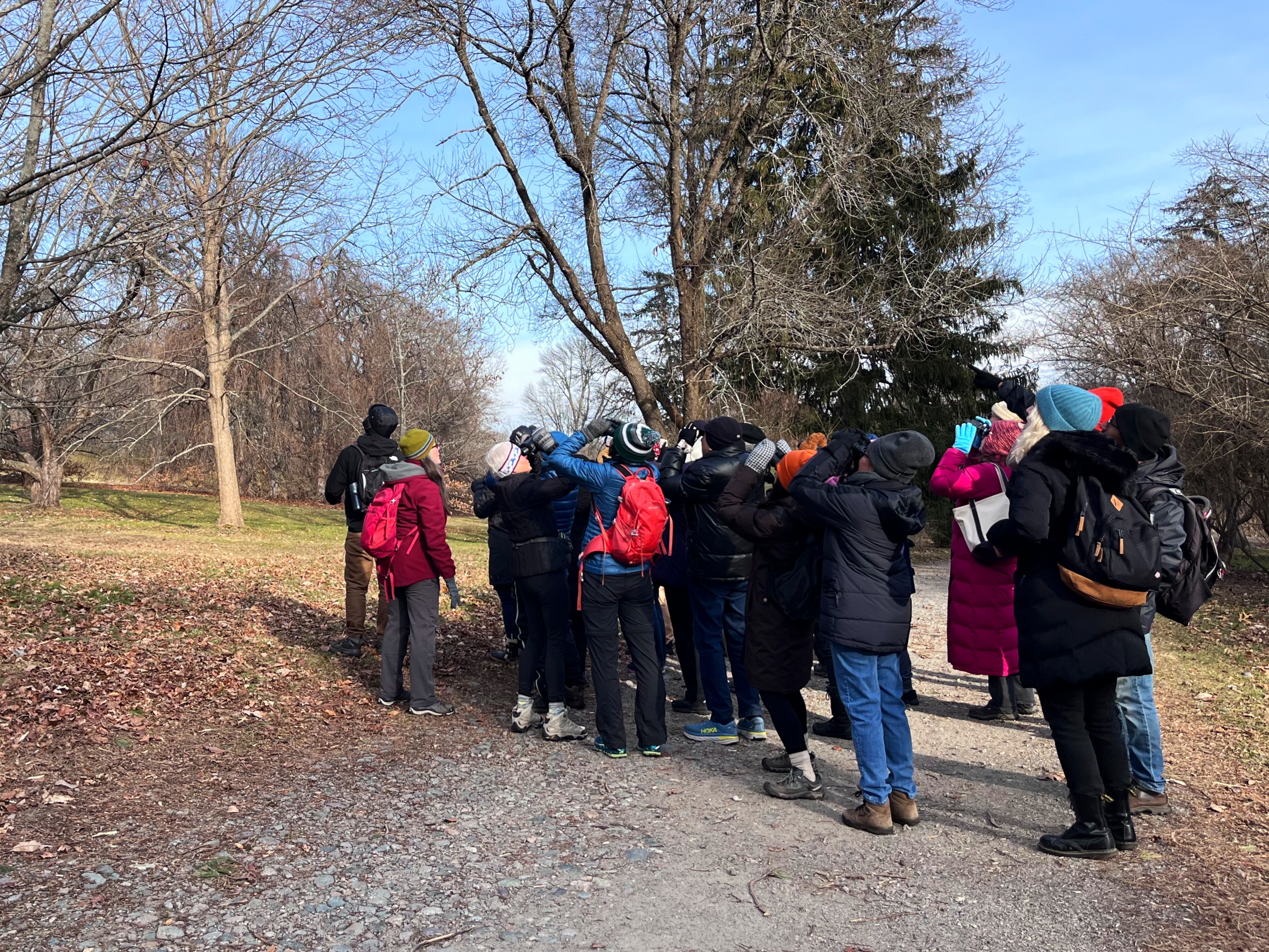
I was grateful to learn that there are groups creating inclusive and safe spaces outdoors. The Feminist Bird Club, which has chapters across North America and Europe, is dedicated to providing a safe space for women, queer people and people of color to connect to the natural world. The club hosts free bird walks, each beginning with a round of introductions and pronoun-sharing for those who are comfortable with it, followed by an opportunity to borrow a pair of binoculars if you don’t have your own.
At my first Feminist Bird Club walk, I was delighted to find myself surrounded by welcoming people of all ages and levels of birding experience who expressed their queerness openly and proudly. I hadn’t known that spaces like this existed. The walk progressed at a comfortable, accessible pace, and the more experienced birdwatchers made sure that nobody missed out on a single sighting, pointing out each bird to the group and waiting until everyone had seen it before moving on. We were all accepted exactly how we showed up that day, and besides, the focus wasn’t on us — it was on the birds.
The LGBTQ+ Birders of North America (QBNA) is another community of queer birdwatchers and their allies; the group facilitates discussions and meetups and hosts an annual birding conference. However, there are inclusive organizations for all kinds of outdoor activities besides birdwatching. In Ann Arbor, The Queer Outdoors leads hiking, foraging and camping trips. On a national scale, The Venture Out Project leads backpacking and wilderness trips across the country for the queer community and trains its leaders and volunteers extensively in inclusivity practices. The Venture Out Project finds power in numbers when creating a safe space for queer people to experience the natural world.
“There’s a lot of reflexivity when experiencing nature,” said Krista Marquardt, a Venture Out Project volunteer in northern Michigan. Marquardt leads hiking and backpacking trips every month during the summer. “The more comfortable you feel, the more you’ll get out of it. Going out in numbers with members of your community makes it easier to let your guard down and open yourself up to new connections with nature,” she said.
Nature serves as common ground to connect with people outside of the queer community as well. Marquardt recounted a solo backpacking trip on North Manitou Island in Lake Michigan where she unexpectedly befriended two cis, straight, white men who were exhausted from their hike. She mentioned doing internal calculations as the men approached to determine whether or not it would be safe to engage before ultimately deciding to talk to them. The three shared food and equipment. Two years later, they still talk all the time.
“The act of connecting with nature for anybody, queer or not, is a grounding experience,” said Marquardt. “It’s integral to our humanity and allows us to peel away constructs and layers to become a more authentic version of ourselves so we can meet that authenticity in others.”
There’s still work to be done to make the outdoors a truly welcoming space for queer people and people of color. Rural areas, which boast breathtaking nature, remote trails and exceptional birdwatching, are often politically unfriendly — and historically dangerous — to people of color, the queer community and those perceived as female. I tend to steer clear of these areas. However, Marquardt has words of encouragement for those who worry they won’t be welcomed in outdoor spaces.
“You may be delightfully surprised at how welcoming a majority of the outdoor community is,” she said. “People who love the outdoors will find you and accept you for who you are most of the time. Sometimes, you need to take baby steps in spaces that feel a bit safer, then work your way up, but I think it will be much more welcoming than you anticipate.”
I’ve found this to be resoundingly true in the birdwatching community. We’re generally a very friendly and reflective lot, and I’ve never met another birdwatcher who wasn’t eager to chat with me about the rare shorebird they spotted from 100 meters away, their attempts to befriend their neighborhood crows, or the mockingbird that helped them to finally find themselves and their people.


